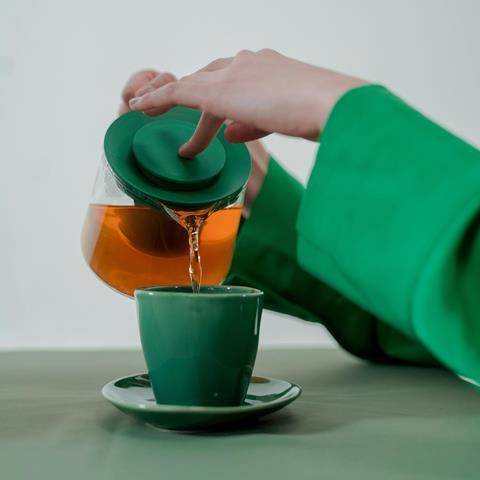Selenium is an essential trace element with antioxidant, immune-enhancing, and anti-aging functions. Selenium-enriched tea is considered an ideal dietary selenium source because most selenium in tea leaves exists in absorbable organic forms.

However, soils suitable for selenium-rich tea production are scarce and unevenly distributed, and even well-known selenium-rich regions often fail to reach the required selenium threshold in harvested tea.
Traditional fortification approaches—such as soil application or foliar spraying of inorganic selenium—face limitations in bioavailability, environmental risk, and inconsistent uptake.
In recent years, selenium-reducing microorganisms have drawn increasing attention for their ability to convert inorganic selenium into SeNPs, a form more easily absorbed by plants. Yet, microbial selenium fortification for tea remains underdeveloped, and identifying strains suitable for large-scale agricultural use has become a critical bottleneck.
Selenium-enriched tea
A study (DOI: 10.48130/bpr-0025-0019) published in Beverage Plant Research on 22 October 2025 by Weidong Wang’s team, Northwest A&F University, provides a sustainable strategy for producing high-quality selenium-enriched tea in regions with limited soil selenium resources.
The team identified a powerful selenium-reducing bacterium, Raoultella ornithinolytica S-1, capable of converting inorganic selenium into selenium nanoparticles (SeNPs) while simultaneously promoting plant growth. Foliar application of the optimized S-1 nano-selenium agent enriched tea leaves with organic selenium, boosted desirable flavor compounds such as theanine and soluble sugars, and lowered the levels of bitter catechins and harmful elements including aluminum, cadmium, and fluorine.
Screening bacteria
To evaluate the potential of a selenium-reducing bacterium for tea biofortification, researchers first screened bacteria on sodium selenite–containing plates and assessed their growth under gradually increasing selenium concentrations, followed by 16S rRNA phylogenetic analysis for taxonomic identification. They then used scanning electron microscopy and energy-dispersive spectroscopy to characterize SeNPs produced by the selected strain and conducted plate-based assays on Ashby’s, CAS, and phosphate-dissolving media to test nitrogen fixation, phosphorus solubilization, siderophore production, and IAA synthesis.
READ MORE: Circadian rhythms in tea plant microbiomes shed light on nutrient cycling
READ MORE: Root microbes may be the secret to a better tasting cup of tea
Fermentation conditions were systematically optimized by varying inoculum level, carbon and nitrogen sources, and inorganic salts to maximize selenium enrichment and viable cell counts. Finally, foliar treatments with either S-1 bio-nano SeNPs or sodium selenite were applied to summer–autumn tea plants, and selenium content, major quality components, catechin fractions, and metal element profiles in young and mature leaves were quantified and analyzed by correlation.
Selenium-tolerant strain
This workflow identified Raoultella ornithinolytica S-1 as the most selenium-tolerant strain, thriving at 200 mM sodium selenite and synthesizing spherical SeNPs (~167 nm) with up to 97% reduction efficiency at 1 mM. The strain exhibited multiple growth-promoting traits and, under optimized fermentation (5 mM sodium selenite, 4% inoculum, mannitol, tryptone, CaCl₂), yielded SeNPs with high nano-selenium content and viable counts.
In field application, S-1 SeNPs significantly increased selenium accumulation in both young and mature tea leaves and outperformed sodium selenite at equivalent concentrations. Treated leaves showed higher aqueous extract, soluble sugars, theanine, and free amino acids, along with reduced tea polyphenols, catechin levels, and phenol–ammonia ratio, indicating improved taste quality.
Moreover, S-1 SeNPs more effectively suppressed Al, Cd, Fe, and F accumulation while enhancing Cu and Zn in a dose- and tissue-specific manner, with selenium content negatively correlated with toxic elements, highlighting a synergistic improvement in both quality and safety of summer–autumn tea.
Dual benefit
The S-1 bio-nano selenium agent offers a dual benefit: it enhances tea flavor and nutritional value while simultaneously reducing toxic metal accumulation. Its strong selenium-enrichment capacity provides a solution for producing selenium-rich tea in regions with insufficient soil selenium, helping tea growers improve the market value of summer–autumn harvests—traditionally considered lower quality.







No comments yet